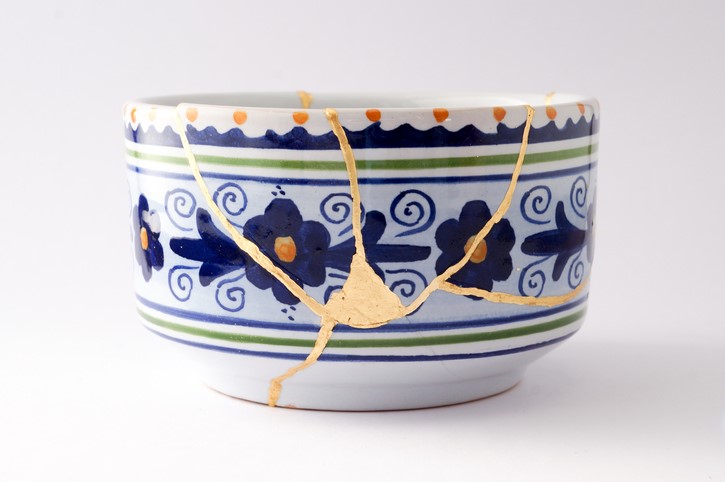Whether it is your daily diet, how you exercise, or what you choose to do with your home interior, Asian culture has a lot to teach about having a happy home. From the philosophy of Wabi-Sabi to house cleaning, exercising, and making healthy foods, changing some of your daily habits can make a demonstrable change in how you perceive the world. Many core principles of Asian culture focus on living humbly and learning to appreciate the world around us. Even if you are not of Asian descent, learning about this culture can teach you new ways of living that will lead to greater happiness and a happier home. Read on to discover how Asian culture can encourage you to make your home a happier and more well-rounded place.
What is Japanese Philosophy, and how does it work?
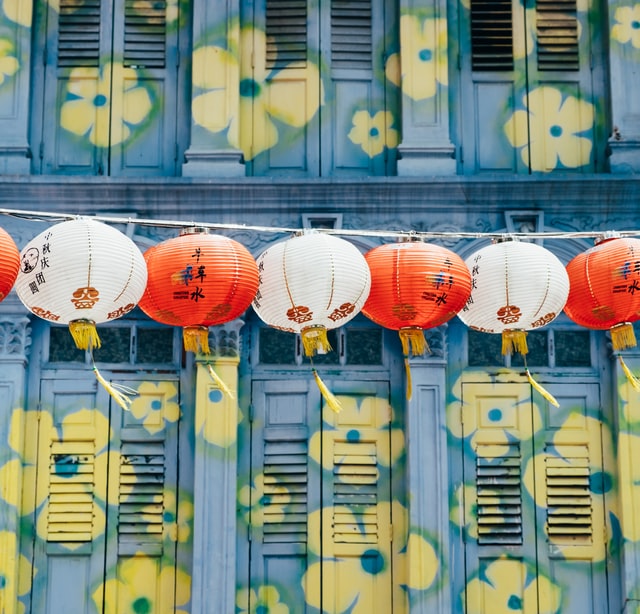
Many aspects of Japanese philosophy work together in synergy to help people develop a well-rounded life. Each of these philosophies has a different focus, but they all help promote a sense of gratitude, humbleness, and overall well-being. When you use these philosophies and incorporate them into your lifestyle, you’ll begin to appreciate things more deeply. Overall, these philosophies are about finding balance in your life. Getting proper exercise and cooking healthy food are just some of the basic principles, but many more also involve how you treat your home and how you think, behave, and interact with others. Let’s take a closer look at some common Japanese philosophies, what they mean, and how you can incorporate them at home.
- Wabi-Sabi: The idea of Wabi-Sabi is to find beauty in the things you have and appreciate them always, even when things around you may make you feel differently. The term Wabi expresses gratitude for simple and humble things, while Sabi refers to “the bloom of time,” which means you should appreciate the beauty of impermanent things. An example would be enjoying the patina on a brass sculpture or the way that wood changes over time due to weather and sunlight. The two words together express the beauty of things that are not always perfect or complete. You can incorporate this philosophy at home by choosing to purchase well-made items that can be passed on to future generations. Avoid buying cheap things that will be thrown away within a year or two. Instead, invest your money in beautiful decorative pieces that will age and improve with time.
- Kintsugi: In Japanese culture, Kintsugi is an art form that involves putting broken pottery back together with gold. This concept embraces the idea that imperfections and flaws can help to create stronger and even more beautiful things. Each crack is unique, and the gold helps to highlight these imperfections, incorporating them into the new design. The idea is that using gold to repair broken items is a process of healing that makes things stronger and more resilient in the end. You can incorporate this concept into your daily thoughts both at home and at work. Whenever things seem difficult or broken, remember that they can always be repaired and will often re-emerge stronger and much more beautiful than before.
- Ma: The idea of Ma in Japanese culture refers to a pause or interval in time and an emptiness in space. This pause is required for life to grow, and it’s integral in helping to develop an individual person’s personal progress. The principle of Ma can be applied to all aspects of life, including how a person thinks and how they interact with their surroundings. Japanese symbolism for Ma includes a door and sun. Together, the two symbols represent a door with a crevice where the sunlight shines through. You can incorporate this philosophy into your own home and life by remembering to take time to stop and appreciate the world around you. It’s a healthy and mindful way to appreciate slower periods in life and to take advantage of them as an opportunity to grow and learn.
Chinese Culture: Daily Habits
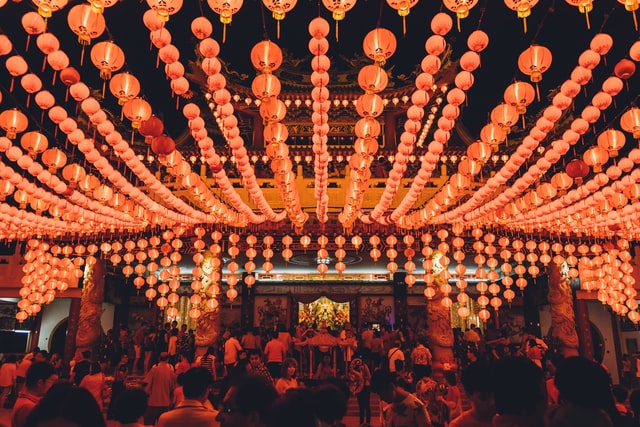
China is an entirely new world for a foreigner, especially from the West. Many people are interested in learning more about the authentic Chinese way of life.
Continue reading to learn about five fascinating aspects of daily life in China.
- No shower in the mornings: I know many Westerners who believe that showering in the morning will make them feel more energized and help them sleep better. However, because Chinese people are accustomed to showering at night, they do not believe it is necessary to rain again in the morning.
- Practicing Tai Chi in the morning: Morning exercise has also been popular in China for a long time. Although the younger generation may prefer to participate in more traditional sports, among the older age, practicing Chinese Kungfu in the morning is considered one of the most acceptable methods to stay healthy, with Taichi being the most popular. Chinese people think that practicing Taichi can assist you physically and mentally by lowering stress, altering mood, and getting better sleep, among other things.
- Drink hot water: Things with frigid temperatures are thought to be hazardous for your body in China, bringing weakness and gastrointestinal problems. As a result, the Chinese often advise against excessive cold foods and beverages. Drinking hot water can help keep your stomach warm, which can aid digestion. Sweating is also a healthy approach for Chinese people to increase metabolism, and drinking hot water can help with that.
- Take a walk after dinner: Unlike the Chinese, most people from other nations prefer to relax after dinner by sitting on the sofa watching TV. However, Chinese people have their unique style of unwinding, which involves going for a walk outside. After a beautiful dinner, the Chinese believe that going for a walk is beneficial to digestion and that you can appreciate the tranquil surroundings at night. Typically, folks will go for a one-hour walk in the park, sometimes with family or friends.
- Playing tennis table in the park: Table tennis is a popular sport in China, and it is believed to be played in practically every park. China has been spending tons of resources on the growth of table tennis since Chairman Mao named it the national sport, allowing Chinese citizens to participate. According to reports, 10 million Chinese people play competitive table tennis regularly, with another 300 million players. Don’t brag about your table tennis skills in China; the older man silently walking down the street could be a former member of the provincial squad.
Japanese Culture: Meals and Cooking
There are many ways that food impacts Japanese culture, including consuming as many healthy options as possible. Common meals include sushi, ramen, udon, and sashimi, each prepared in a different way. In Japanese cuisine, “The Power of Five” is often incorporated. This involves using the five senses, adding at least five colors to a dish, using the “fifth sense” known as umami, and preparing foods that may be eaten five ways when possible.
- Sushi: Sushi comes in many forms and is often served as a roll wrapped in seaweed and rice, then sliced into sections. To prepare sushi, it’s best to place your food on a bamboo mat for easy rolling. A sharp bento knife makes it easier to slice fish into thin strips. When possible, Japanese short-grain rice should be used and cooked to a dense, sticky consistency. You can use any fish you like, but common examples include tuna, snapper, mackerel, and salmon.
- Sashimi: A very popular dish in Japanese culture is sashimi, which is raw fish sliced into very delicate, bite-sized pieces. The fish can be plated next to rice and colorful vegetables for a well-rounded meal. To prepare sashimi, look for the freshest fish available from your local grocer or fish market. Once the fish is boned and filleted, take a sharp knife and gently slice it into thin, manageable strips. Serve your sashimi with some sticky white rice and fresh, raw vegetables like daikon radish, avocado, carrots, and cucumber.
- Ramen: Authentic Japanese ramen is a soup made from chicken or pork stock mixed with ingredients like tuna flakes, pork bones, dried baby sardines, onions, kelp, and shiitake mushrooms. This soup includes various seasonings like salt, soy sauce, or miso, a fermented soybean paste. Many people add sliced eggs to ramen, and you can get creative and come up with your own mixture of ingredients based on your personal preference. When cooking authentic Japanese ramen noodles, make sure they are cooked without salt and boiled last since they are generally cooked quickly within just 30 seconds of boiling.
- Udon: Udon is a thick type of noodle made from wheat flour. This dish is comfort food in Japanese culture and is typically served with a light and savory seafood broth. For a heartier meal, you can serve udon with additional ingredients like green onions, egg yolk, and fish cake. The udon noodles should be cooked until they reach a soft, almost bouncy consistency.
Japanese Culture and Exercise

Exercise is considered part of daily living in Japan rather than something you do for fitness or weight loss. Most people in Japanese culture do not think of walking as exercise but rather just a part of daily life. Here are some common Japanese exercises that you can try at home.
- Radio calisthenics: In Japanese culture, radio calisthenics involves doing simple warm-up exercises while listening to the radio in the background. Warm-up workout guidance is typically broadcast over Japanese radio in the morning, and people gather together outside to perform their exercises as a group while the radio plays.
- 5-minute towel exercise: This simple, five-minute exercise involves you lying on the floor with a rolled-up towel placed under the lower back. Extend your arms and legs away from your body as you point your toes inward until they touch. Touch your pinky fingers together, place your palms on the floor, then lay in this position for five minutes and repeat this daily.
- Karate: The sport of karate was developed in Okinawa in the 17th century. This form of mental and physical exercise involves using specific combat moves with the hands and feet to both block and deliver blows. This martial art is a popular way to get exercise as you develop new skills. Consider taking karate classes to help you improve and work your way through the different colored belts.
- Kendo: Kendo is an ancient martial art once used by the samurai in battle. Today, Kendo is becoming a popular form of exercise throughout the world. This unique and fast-paced sport involves using bamboo “swords” as you battle your opponent. The goal is to strike the other person’s armor in specific areas to win the match.
Chinese Culture: Meals and Cooking
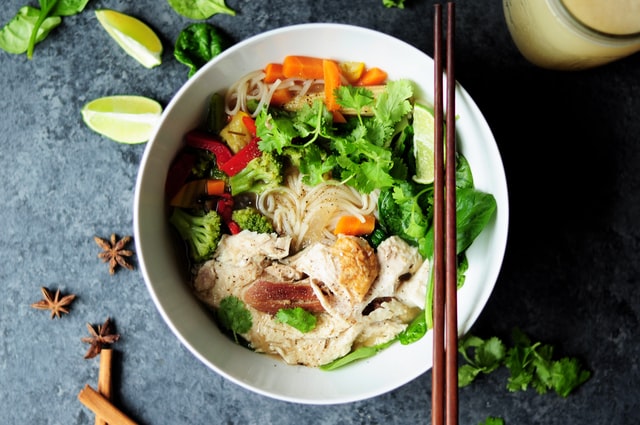
As we’ve all been told, food is the stuff of life. When it comes to cuisine, China is a veritable culinary paradise. What should you get from the many different types of Chinese cuisine? Chinese food is an essential component of Chinese culture, with a lengthy history, distinct characteristics, various styles, and beautiful cuisine. Color, perfume, taste, meaning, and appearance are all celebrated in traditional Chinese meals.
The four most popular dishes among foreigners and Chinese are listed below. In China, these meals are found in the most prominent restaurants.
- Sweet and Sour Pork: Pork in a sweet and sour sauce is a Chinese staple. Its sweet and sour mix flavor and vivid appearance are irresistible. Because some individuals don’t eat pork, several eateries substitute Sweet and Sour Chicken, demonstrating how delectable the flavor is.
- Kung Pao Chicken: When you order Chinese food in a restaurant, what comes to mind? I’m guessing you’d say “Kung Pao Chicken.” Kung Pao Chicken is a popular Chinese dish popularized by a TV show in the United States. It’s just diced chicken with peanuts, cucumbers, and peppers cooked together. This red cuisine is mildly spicy and flavorful, with soft meat
- Spring Rolls: Chinese New Year is inextricably related to the name. Spring rolls were traditionally served to commemorate the end of winter and the start of spring for the Chinese. Depending on your preferences, the filling might be sweet or savory. Sweetened bean paste is a fantastic choice for a sweet filling. Chinese cabbage and shredded pork are particularly popular for a spicy version, with shredded bamboo shoots and mushrooms added for good measure. Perfect spring rolls should have crispy skins and delicate filling.
- Dumplings: Zhang Zhongjing, a prominent traditional Chinese medicine practitioner, developed dumplings over 1,800 years ago. To cure frostbitten ears in the winter, Doctor Zhang stuffed little dough wrappers with stewing mutton, black pepper, and some warming herbs. He boiled the dumplings and gave them to his patients till the Chinese New Year arrived. People followed Zhang’s recipe and produced dumplings to celebrate Lunar New Year and heal from frostbitten ears, making it a staple Chinese New Year meal until now.
Daily habits in Japanese Culture
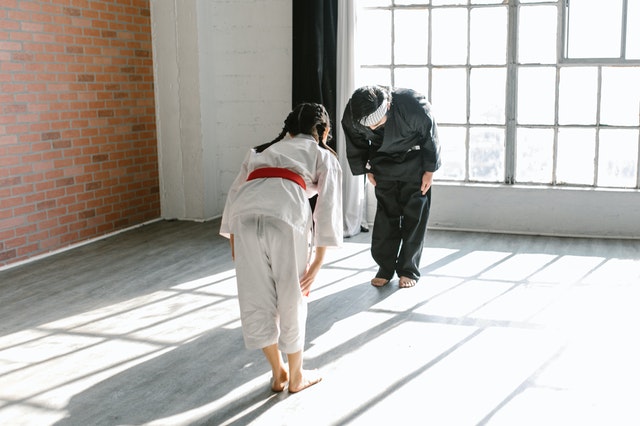
Practicing good daily habits ensures better life and a happy home. Here are some of the typical daily habits that are performed in Japanese culture that you can also do in your own life.
- Greeting Etiquette: When people meet, they greet each other with a bow. This bow can be a simple nod to a sweeping bend of the waist. When the bow is deep and long, it shows a deeper level of respect and gratitude toward the other person. This is a common daily habit that is similar to the handshakes Americans use to greet one another.
- Gift Giving: Giving and receiving gifts with both hands shows respect in Japanese culture. Recipients should politely refuse the item up to three times before finally accepting it. If you’re meeting a group, it’s important to give everyone a gift, not just a single person. Gifts should not be opened in front of a large group as this is considered to be impolite. Money is a popular wedding gift in Japan but should always be given in odd numbers. Giving gifts in pairs is deemed to be lucky, but the numbers four and nine should be avoided.
- Omiyage and Temiyage: These two Japanese words refer to two different types of gifts. Omiyage are souvenirs you gift someone after bringing them home from a trip. Temiyage is a thank-you gift you give someone when you visit their home. Many Japanese people buy lots of gifts, so they always have something to offer to family, friends, and coworkers.
- Greetings Before Eating: Japanese people put their hands together and say the word “itadakimasu” before eating. This word means that you really appreciate and humbly accept the meal offered. It is also a way to give thanks for the sacrifice that the living beings have made so you can enjoy the meal, whether it’s an animal or vegetable.
- Taking Off Shoes: Ancient Japanese homes were made using tatami mats that were layered on the floor, and most people do every activity on the floor, including eating and working. The custom of taking off your shoes before entering a home continues in Japan, and it is a common practice in both home and school environments. This can also be done at home to prevent dirt and mud from getting on your floors.
Japanese Culture and Dating

Here are some common practices within the Japanese culture regarding dating:
- Couples are Likely to Split the Bill: Many couples split the bill when going on a date to show respect and equality between both parties.
- It’s Normal for a Weekend Date to Last All Day: When going on a date during the weekend, many Japanese couples look for activities they can do together for the entire day. The date may start with a nice cup of coffee and then progress to attending a theme park and finishing the evening watching fireworks, for example.
- Public Displays of Affection Aren’t Common: in Japan, people value their privacy and see public displays of affection in an unfavorable light. You may see couples hold hands, but you won’t see them hug or kiss each other in public.
- Couples Enjoy Stay-at-Home Dates: Many Japanese couples prefer to enjoy a date day at home. Whether watching movies or playing video games together, they often prefer to enjoy a date together alone at home, unlike those in Western culture who prefer to go out on the town.
- Valentine’s Day is When Women Express Their feelings to Men: Most women give a gift of chocolate to their men on Valentine’s Day and don’t receive a gift in return. However, there is another holiday in Japan called “White Day” that takes place on March 14th, where men offer gifts and express their love to the woman in their life.
Whether it’s the food you eat, how you clean your home, or trying some new daily exercises, incorporating Japanese culture and habits can help you have a happy home. Think about some of the ways this amazing culture can improve your life as a whole and how you view the world. With a few simple changes, you can make Japanese culture part of your daily life and reap the many benefits it provides.
